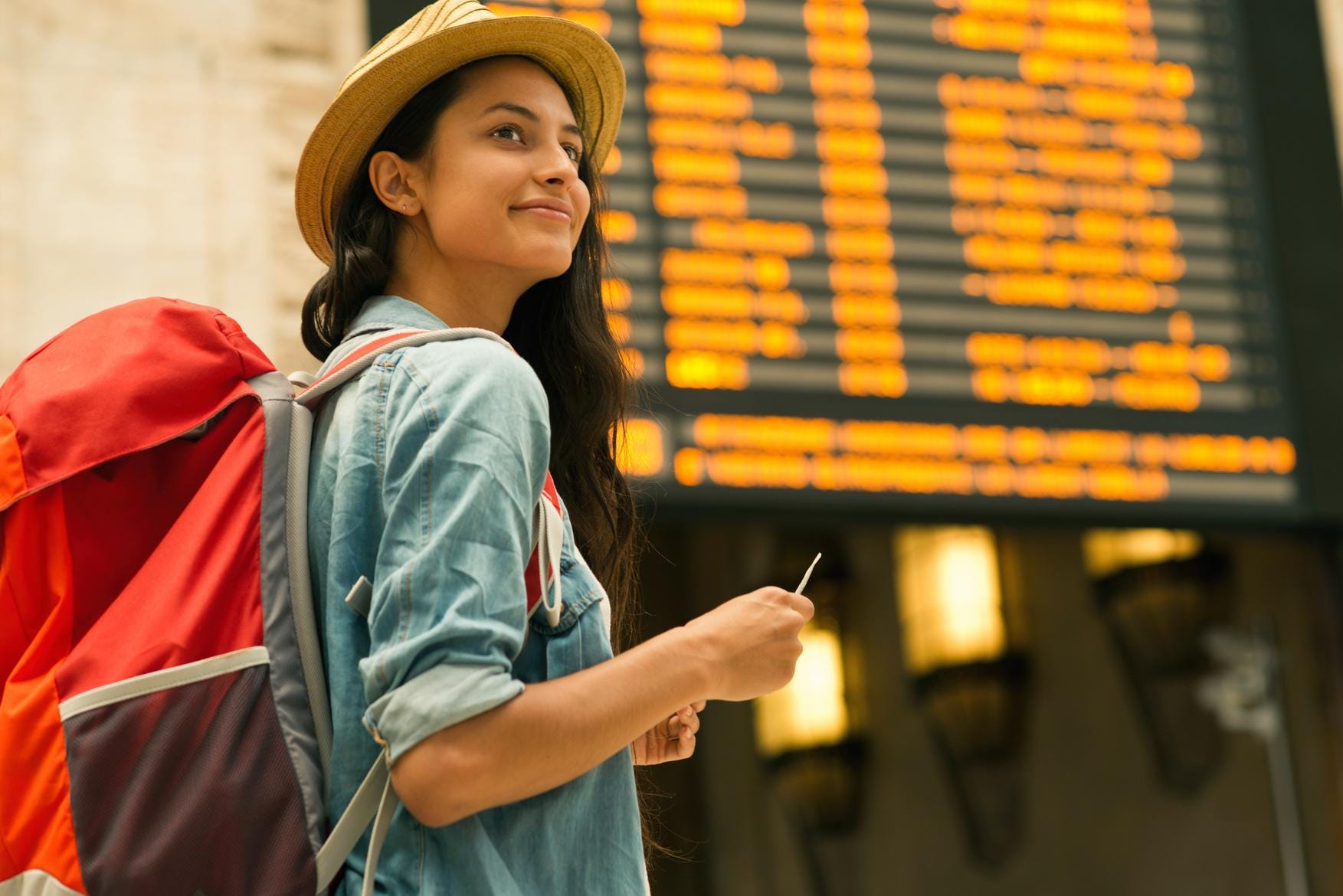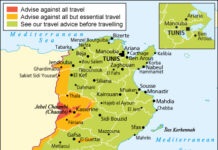
Young woman checking her train in time board
Travel literature is full of images and stories of men ascending Everest, launching surfboards into Pacific waves, mountain biking down rocky trails, and commanding yachts or safari vehicles.
But the travel industry knows what the average American does not. That is, women are statistically and actually much more likely to travel than men. The average U.S. traveler is a 47-year-old woman. And whether women travel with their partners, their families, friends, solo or in groups, 80% of all travel decisions are made by women.
To put it simply, women love to travel. And frankly, they seem to love it more than men.
While men might go in more for hang-gliding or running with the bulls in Pamplona, today three-quarters of those taking nature, adventure and cultural trips are female. Women also like to meet people and purchase local goods more than men.
Indeed, women’s dominance of travel is both startling and decisive. In the U.S., women dominate leisure travel by a 63% to 37% ratio over men. Worldwide there is a similar skew, with 64% of global travelers being female, versus 36% male, according to RV and Playa.
Females slightly outnumber men in the U.S., but hardly enough to explain the difference. According to the Census Bureau, of 331 million Americans, about 50.5% are female, 49.5% male. And interestingly, men are more likely to be “unpartnered” than women. Single women are much more likely to travel than single men, but there are fewer of them. There are 42.07 million single women in the U.S according to the 2020 Census, against some 48.08 million unmarried men.
Travel is expensive, and women have historically earned less than men. But that is changing. Women are moving into well-paid professions, while 60% of U.S. college students are female. Women hold 60% of the wealth in the U.S. They represent 54% of travelers with annual incomes over $250,000, according to MMGY Global. Women outlive men and often use inherited wealth for retirement travel. Women also tend to carefully plan and save for vacations.
MORE FOR YOU
Woman sitting inside private jet airplane and holding laptop computer.
The travel industry is recognizing this. Women represent more than 50% of workers in the trillion-dollar travel industry. Women increasingly have leadership roles in the industry as well, including at airlines like JetBlue.
So what gives? Do men prefer staying home playing video games while women plane their world explorations?
Jessica Nabongo has visited more than 150 nations (more than 45 solo) in her effort to be the first black woman to visit every country. Nabongo, who runs a small travel agency, told Vox in 2019, “When I do meet male travelers, a lot of them are gay. In particular, straight men only travel if their girlfriend is planning it or if it’s a bachelor party.”
There are many signs of the travel industry’s focus on women. Increasingly women are front and center in TV ads for Las Vegas, for ‘tribal’ casinos, for cruise lines and other destinations. Ads focus on well-dressed or swimsuit-clad young women dancing, dining, drinking and generally having a great time with female friends.
These ads reflect the social media world of Instagram, filled with women posting from glamorous, exotic, or rugged destinations.
Young women in Paris taking selfie against the Seine river
The appeal to women’s interest in travel is also made in more subtle ways. Publications like Conde Nast Traveler offer articles on where to see the Pantone Color of the Year 2023 (Viva Magenta) around the world. This is a subject of limited interest to many men.
Some 91% of women book travel with their friends. As for adventure travel, one group reports that an overwhelming 85% of solo travelers are women, despite understandable safety and loneliness concerns.
As AARP notes, “Maybe you can’t find a suitable traveling companion or maybe, like me, you simply enjoy solitude during your explorations. With no one else’s needs to worry about, you control your itinerary…and you’re much more likely to meet interesting new friends along the way than if you were with a pal.”
Introspection, inspiration, and transformation seem to be key drivers for women’s travel. Cheryl Strayed wrote the best-selling Wild about her hike along the 1,100-mile Pacific Crest after unsettling events in her life. The full name of Elizabeth Gilbert’s best-selling memoir is Eat, Pray, Love: One Woman’s Search for Everything Across Italy, India, and Indonesia.
This kind of travel hunger did not disappear with the pandemic. Instead, this spring and summer the floodgates opened. Domestic travel rebounded, and international travel began to. Women led the way.
For the future, the question for the travel industry is not whether women are the real travelers, but what is stopping men from catching up with them.
Instagram-like selfie of a young man in Barcelona, Spain.








